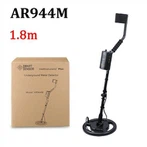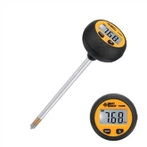Problems and solutions to coating thickness gauges
The coating thickness gauge is a non-destructive instrument used to detect the surface coating thickness of various metal materials. During the use of the user, sometimes there will be some abnormalities. Sometimes we can handle these abnormalities ourselves. According to the long-term Based on the application experience of coating thickness gauges, let's talk about the common faults and solutions of coating thickness gauges.
1.The instrument does not turn on
① Please check whether the battery is charged or replace it with a new one.
② Please check whether the battery is in good contact and the electrodes are not oxidized or rusted (if rusty, use tools to scrape off the oxide layer).
③ Please check whether the button is pressed in place and the button is normally elastic.
④ If other host circuits are faulty, please consult the company's after-sales service or return to the factory for maintenance.
2. Instrument measurement is inaccurate
① Please systematically calibrate the instrument first to make it comply with the error range. The error follows ≦3% (thickness value). If further testing is required, please perform system calibration on a smooth bare base of the workpiece to be tested (on an uncoated base).
② Please check whether the front end of the probe is worn, deformed, or has attached substances, etc., and whether the outer sheath of the probe is not horizontal, etc. The deformation can be corrected by polishing with sandpaper appropriately and cleaned.
③ The surface roughness of the base material of the measured part is affected, causing systematic errors and accidental errors. During measurement, increase the number of measurements at different positions to overcome accidental errors. Or use sandpaper to polish the base material and recalibrate the zero point of the instrument.
④Measurement techniques and probe placement. Keep the probe perpendicular to the sample during testing.
⑤The curvature of the measured piece should be recalibrated under the radius of curvature that the probe is adapted to. Especially on the convex surface of the pipe, pay attention to the stable placement of the V-shaped groove of the probe.
3. The instrument cannot measure
① Check whether the probe is well connected and inserted in place.
② Check whether the probe wire is broken, focusing on the probe connector (you can turn the knob to check the connector)
③ Frequent and large-scale use of the probe, aging or damage of the sensor, burns, etc.
④Other host circuit component failure
4. No data changes in measurement
① Whether the probe is well connected and whether the probe is damaged, etc.
②Relevant host line failure.






